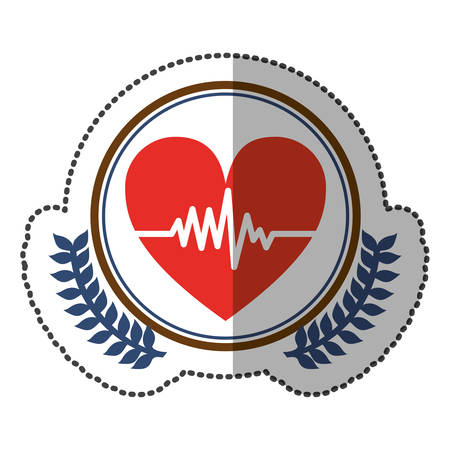1. Understanding Cardiovascular Risks on the Trail
Hiking is a fantastic way to enjoy nature and get exercise, but if you have cardiovascular issues, it’s important to understand the risks before you lace up your boots. Trekking can put extra strain on your heart, especially when climbing hills or carrying a heavy backpack. Let’s break down the common heart-related risks hikers face, how physical activity affects your heart, and what factors you should think about before starting your hike.
Common Heart-Related Risks for Hikers
| Risk | Description |
|---|---|
| Heart Attack | Sudden blockage of blood flow to the heart, often triggered by overexertion. |
| Arrhythmia | Irregular heartbeat, which can be caused by dehydration, stress, or altitude changes. |
| High Blood Pressure | Physical effort and anxiety can temporarily raise blood pressure levels. |
| Angina | Chest pain or discomfort due to reduced blood flow to the heart muscle. |
| Shortness of Breath | Your heart may struggle to keep up with oxygen demands on steep or long trails. |
How Strenuous Activity Impacts Your Heart
When you hike, especially at higher elevations or on tough terrain, your body needs more oxygen. Your heart works harder to pump blood and deliver oxygen throughout your body. If you already have cardiovascular problems, this extra workload can increase your risk for serious events like a heart attack or arrhythmia. Even experienced hikers should be cautious because changing weather, trail conditions, and altitude can quickly make a hike more challenging than expected.
Key Factors to Consider Before You Hit the Trail
- Your Medical History: Talk to your healthcare provider about your plans and get a checkup if needed.
- Trail Difficulty: Choose routes that match your fitness level and avoid steep climbs if you’re new or have health concerns.
- Pace Yourself: Don’t rush—take breaks often and listen to your body’s signals.
- Weather Conditions: Hot or humid days make hiking even more strenuous for the heart.
- Packing Essentials: Bring enough water, snacks, medications, and a cell phone for emergencies.
- Buddy System: Hike with a friend or group whenever possible so help is close by if something goes wrong.
Remember:
The right preparation makes all the difference when hiking with cardiovascular issues. By understanding these risks and planning ahead, you can enjoy America’s beautiful trails safely and confidently!
2. Pre-Hike Prep: Consulting Your Healthcare Team
Before you hit the trails, it’s important to get the green light from your healthcare team. Hiking with a heart condition can be safe and fun, but only if you know your personal health limits and prepare ahead of time.
Why Talk to Your Doctor First?
Your doctor knows your medical history better than anyone else. They can help you understand what level of activity is safe for your specific heart condition. It’s not just about getting permission—it’s about having an honest conversation so you’re clear on any risks and special precautions you need to take.
Questions to Ask Your Doctor:
| Question | Why It Matters |
|---|---|
| Is hiking safe for my heart condition? | Ensures your activity level matches your current health status. |
| What warning signs should I watch out for? | Helps you recognize symptoms that mean you should stop and seek help. |
| Are there any medications I should take before or during the hike? | Makes sure you’re protected and have what you need if symptoms arise. |
| Should I avoid certain altitudes or weather conditions? | Some heart conditions are more sensitive to altitude or extreme temperatures. |
Know Your Limits
Your doctor may recommend certain guidelines based on your condition. This could include how far or how high you should hike, what pace is safe for you, or if you should avoid steep climbs. Knowing these limits keeps your trek enjoyable and stress-free.
Gathering Medications and Medical Info
Preparation isn’t just mental—it’s practical. Make a checklist of everything you might need on the trail:
| Item | Purpose |
|---|---|
| Your prescribed medications (in original containers) | You’ll want quick access in case of symptoms or emergencies. |
| A copy of your medical information (like a card listing conditions and meds) | If first responders need to help, they’ll know exactly what’s going on. |
| Your doctor’s contact info | Easy access for advice in case something comes up during your hike. |
| An emergency plan (who to call, nearest hospitals) | Puts peace of mind in your pocket if anything unexpected happens. |
Pro Tip:
If you use a smartwatch or fitness tracker, set up emergency contacts and consider using the health features that track heart rate and alert someone if something goes wrong. It’s one more way to stay safe while enjoying the outdoors.

3. Choosing the Right Trail and Pace
Picking Beginner-Friendly Trails for Heart Health
If you have cardiovascular concerns, starting with beginner-friendly trails is key. Look for routes that are well-maintained, relatively flat, and clearly marked. Many U.S. parks and public lands offer “easy” or “accessible” trail options. These paths usually have less elevation gain and smoother surfaces, making them ideal for those easing into hiking or managing heart health issues.
Popular U.S. Trail Apps to Help You Choose
Technology makes it easier than ever to find safe trails that fit your needs. Here are some popular trail apps in the U.S. that can help you search for the right hike:
| App Name | Main Features | Why Its Helpful |
|---|---|---|
| AllTrails | Extensive trail database, filters for difficulty, user reviews, maps | Easily filter for “easy” trails and read about others experiences |
| Hiking Project | Detailed maps, GPS tracking, community tips | See elevation profiles and plan based on current fitness level |
| Gaia GPS | Offline maps, route planning, terrain analysis | Good for remote areas where cell service is spotty; helps avoid getting lost or overexerted |
| REI Co-op National Parks Guide | National park-specific trails, offline access, safety info | Perfect if youre exploring national parks or looking for ranger-recommended routes |
Finding Your Ideal Hiking Pace
Your pace matters as much as your path. Overexertion can put strain on your heart, so listen to your body and take it slow. Here are a few tips to help set a comfortable pace:
- The Talk Test: If you can hold a conversation while walking, youre at a safe pace.
- Heart Rate Monitoring: Use a smartwatch or fitness tracker to keep your heart rate within your doctors recommended zone.
- Rest Often: Take breaks at benches or scenic spots; enjoy the view while you catch your breath.
- Avoid Steep Climbs: Gradual inclines are friendlier on your heart than steep switchbacks.
- Go With a Buddy: Hiking with someone else can help you stay motivated—and safe.
Pace Guide Table: How to Gauge Your Effort Level
| Pace Description | Bodily Signs | Recommended For? |
|---|---|---|
| Leisurely Stroll (1-2 mph) | No sweating, easy breathing, can chat easily | Ideal for most people with heart issues just starting out |
| Moderate Walk (2-3 mph) | Slightly faster breathing, light sweat possible, still able to talk comfortably | If cleared by your doctor and feeling good during activity |
| Brisk Hike (3+ mph) | Louder breathing, sweating more noticeable, talking gets harder | Avoid unless specifically approved by your healthcare provider |
4. Packing Essentials: Heart-Smart Gear and Emergency Items
When you’re hiking with a heart condition, what you pack can make all the difference. The right gear helps you stay safe, manage your condition, and respond quickly to emergencies. Here’s a checklist of must-have items for heart-smart hiking in the U.S.
Must-Have Heart-Smart Hiking Gear
| Item | Why It’s Important | Tips |
|---|---|---|
| ID Tags/Medical Alert Bracelet | If something happens, emergency responders need to know about your heart condition fast. | Wear a visible medical alert bracelet or necklace with your diagnosis and emergency contact info. |
| Prescribed Medication | You may need medication while on the trail (such as nitroglycerin or blood pressure meds). | Carry extra doses in a waterproof container, and keep them easily accessible. |
| Cell Phone & Portable Charger | For calling 911 or loved ones if you feel unwell or need help. | Check for cell coverage on your route; bring a portable charger so you’re never out of power. |
| Personalized First Aid Kit (Cardiac-Specific) | Treat minor injuries and manage cardiac emergencies. | Add aspirin, glucose tablets (if diabetic), and a copy of your medication list. Include emergency contacts and doctor’s info. |
| Hydration System (Water Bottle or Hydration Pack) | Staying hydrated is crucial for heart health, especially in the heat or at altitude. | Pace your water intake; consider electrolyte drinks if sweating heavily. |
| Snacks for Steady Energy | Avoid dips in blood sugar that can affect heart function. | Pack healthy snacks like trail mix, granola bars, or fruit pouches. |
| Sunscreen & Weather-Appropriate Clothing | Protects against sunburn and temperature extremes, which can stress your heart. | Dress in layers; use sunscreen SPF 30+; wear a hat and sunglasses. |
| Emergency Whistle or Signal Device | If you become unable to use your phone, a whistle alerts others to your location. | Attach to your backpack for easy access in an emergency. |
Other Helpful Tips for Heart-Healthy Hikers
- Share Your Plans: Always let someone know where you’re going and when you expect to return.
- Buddy System: If possible, hike with a friend who knows about your condition and what to do in an emergency.
- Pace Yourself: Listen to your body—rest when needed and don’t push too hard.
- Know the Signs: Be aware of warning signs like chest pain, dizziness, or unusual shortness of breath—and don’t hesitate to seek help if they appear.
Packing smart isn’t just about comfort—it’s about safety. With these essentials in your backpack, you’ll be better prepared to enjoy America’s great outdoors with peace of mind while managing your cardiovascular health.
5. Staying Safe: Recognizing Warning Signs and Responding to Emergencies
Know the Symptoms: What to Watch For
If you have a heart condition, it’s important to be aware of signs that could mean trouble while hiking. These symptoms aren’t always dramatic, so pay close attention to your body. Here’s a quick guide:
| Symptom | What It Might Mean |
|---|---|
| Chest pain or pressure | Possible heart attack or angina |
| Shortness of breath (unusual for you) | Heart or lung problem |
| Dizziness or fainting | Low blood pressure or arrhythmia |
| Irregular heartbeat | Arrhythmia or other heart issues |
| Nausea, cold sweats, or lightheadedness | Warning signs of cardiac distress |
Steps to Take If Issues Arise on the Trail
If you experience any of these symptoms:
- Stop hiking and rest immediately in a safe spot.
- Let someone in your group know how you’re feeling.
- If symptoms don’t improve after a few minutes, use your phone or emergency device to call for help (911 is standard in the U.S.).
- If you carry prescribed medication (like nitroglycerin), use it as directed by your doctor.
Emergency Response Basics
- Stay calm and sit down to avoid falls.
- If you can, mark your location using a trail marker number or GPS coordinates.
- If someone else is helping you, make sure they know about your medical condition and what medications you take.
Talking to Your Hiking Buddies: American Trail Etiquette
In the U.S., it’s common and responsible to let your hiking partners know if you have a health issue before hitting the trail. Here’s how to communicate effectively:
- Share only what’s needed: “I have a heart condition and may need to stop if I feel unwell.”
- Show them where you keep any emergency meds (like an inhaler or nitroglycerin).
- Explain what symptoms might look like so they know when to act.
Pro Tip: The Buddy System
Stick with at least one person who knows about your condition. This is not just good manners—it’s smart safety on American trails, where looking out for each other is part of the hiking culture.


